Coffee Bean Lists
-
Common sense of coffee beans introduction to Ugandan Uganda coffee
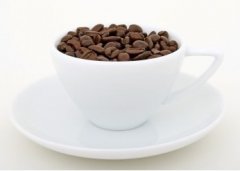
In Uganda (Uganda), Arabica coffee beans account for only 10 per cent of the country's total coffee production, but it is enough to attract attention. Uganda's best coffee is mainly produced in the mountains of Elgon and Bugisu along the Kenyan border in the north and Ruwensori in the west, and is available for export in January or February of each year. Red
2015-04-17 Coffee beans Common sense Uganda Coffee introduction Ug -
East Timor boutique coffee natural organic coffee beans

Timor-Leste is most famous for its organic coffee, which is interestingly related to the deteriorating law and order of the independence movement, as chemical fertilizers and pesticides cannot be transported to remote coffee fields, coffee farmers rarely spray pesticides and grow them entirely from natural organic fertilizers. Statistics also show that East Timor's Arabica organic coffee exports are 40% higher than pesticide-sprayed Arabica beans. East Timor
2015-04-17 Dongdi boutique coffee natural organic coffee beans -
High-quality coffee beans detailed description of mocha coffee beans

Mocha coffee (Cafe Mocha) is one of the oldest coffee, its history can be traced back to the origin of coffee. It is a mixture of Italian espresso, chocolate sauce, whipped cream and milk. Mocha gets its name from the famous port of Mocha. In the 15th century, the outward transportation industry of the whole coffee country in Central and East Africa was not prosperous, and the Yemeni Mocha was a major commercial port near the Red Sea at that time.
2015-04-17 Boutique coffee beans detailed explanation mocha -
Kopi Luwak's most expensive animal droppings coffee

Introduce: the most expensive coffee in the world, the best coffee in Indonesia comes from Indonesian musk cat shit coffee. Kopi Luwak is produced by the feces of Indonesian civet as raw material, so it is called Kopi Luwak. This kind of animal mainly feeds on coffee beans. After completing the fermentation in the coconut cat's stomach, it destroys the protein, produces short peptides and more free amino acids, and reduces the bitterness of the coffee.
2015-04-17 Cat droppings coffee expensive animals feces profile world Indonesia -
Introduction of water washing method for the treatment of high-quality coffee and raw beans
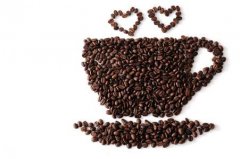
Coffee washing began in the mid-18th century. In the washing process, the pulp of the coffee fruit (red cherry) is first removed, then the residual mucous membrane on the inner pericarp is removed by a fermentation tank, and the beans are washed and dried. The difference between the non-washing method and the water washing method is that the non-washing method is to remove the pulp after drying, while the washing method is to remove the pulp before drying. Washing can pass every step.
2015-04-17 Boutique coffee raw beans treatment method introduction washing starting from -
Introduction to the treatment of high-quality coffee and raw beans-tanning method

Sun treatment will first identify sunken beans in the sink, that is, ripe or half-ripe beans are spread in the drying farm for natural drying. The specific time depends on the local climatic conditions, which usually takes two to four weeks. When the moisture of the coffee bean is reduced to 12%, then use a sheller to grind off the hard pulp and silver skin. The requirement of the sun treatment on the climate is very high.
2015-04-17 Boutique coffee raw beans treatment method introduction sun exposure -
Introduction of half-sun method for the treatment of high-quality coffee and raw beans
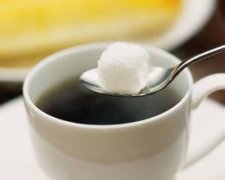
In order to improve the quality of coffee in Brazil, the Brazilian government has invented half-sun method and vigorously promoted it. At present, almost all high-quality coffee beans in Brazil use half-sun method to treat raw beans. It can be said that half-sun method has successfully improved the overall quality of Brazilian coffee. The pre-treatment method of half-sun method is almost the same as that of water washing. Choose beans: first put the coffee fruit in the big sink
2015-04-17 Boutique coffee raw beans treatment methods introduction tanning Brazil government for -
Introduction of semi-washing method for the treatment of high-quality coffee and raw beans

It is a relatively new and rare method. This method is also suitable for processing local coffee only in specific areas of some countries where there is a long drying period in the climate. The coffee produced by this method is sticky, and the mucus is not removed with fermentation in the tank. Therefore, the coffee produced by this semi-wet treatment contains moisture treatment.
2015-04-17 Boutique coffee raw beans treatment method introduction semi-water washing one comparison -
Introduction of honey treatment method for raw bean of high-quality coffee
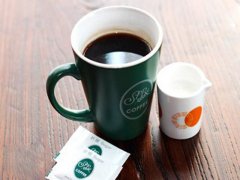
The so-called honey treatment (Miel Process in Spanish) is said to refer to the process of making raw beans by sun-drying with mucous membranes. After the outer pulp of the coffee bean is removed, there will be a layer of sticky jelly. The traditional method of washing is to wash it off with clean water, but because of the limitation of water resources in some high-altitude areas, there is this way of direct drying. Honey treatment process
2015-04-17 Boutique coffee raw beans treatment method introduction so-called Spanish M -
What is Arabica coffee?

In many places where coffee is sold, it is not difficult to find words like "100% Arabica". Even canned coffee has a style called Arabica coffee, which makes one wonder: what is "Arabica coffee"? In fact, Arabica is the name of the coffee tree variety (species). "Arabica" and "Robusta" are two kinds.
2015-04-16 Boutique coffee common sense what rabbi a lot sell place we -
Introduction to Librika Coffee beans

Liberica coffee beans: large shrubs or small trees, 6-15 m tall; dark brown bark; branches spreading, hard and straight. Leaves opposite, leathery, elliptic or Obovate-elliptic, 15-30 cm long, tip mucronate, base broadly cuneate, margin entire, rarely microwave, often with small pores in lower vein axils; petiole 8-20 mm long; stipules broadly triangular, 3-4 mm long, tip obtuse, rarely convex
2015-04-16 Libby Rika coffee beans boutique introduction shrubs Joe -
Observe the common sense of 10 elements of coffee beans

The raw bean seller is mainly responsible for grading the coffee beans before selling them to the coffee bean merchant. After the grading is completed, premium coffee beans and boutique coffee beans will be selected, although they will have some defects but do not affect the coffee rating. These defects are not so serious, but they can also cause potential damage to the quality of coffee. Although Cupping is undoubtedly the most definite way to check coffee beans.
2015-04-16 Observation coffee raw beans essential elements coffee beans common sense sellers major responsible -
Common sense of graded coffee to distinguish between coffee beans and coffee beans

● distinguishes the key names and specifications of coffee beans the name of the port of export of ● can tell the shipping route from the name of the port of exit marked. Coffee from the same origin or the same brand has a certain route, so it is also exported from the same port. For example, if it is marked as "Brazil. Santos", it means that this is coffee exported from Santos, but the one marked "Mocha" is taken as an example.
2015-04-15 Distinguish coffee beans and grading coffee common sense discrimination essentials names -
Ethiopia Yega Shefi Fine Coffee Bean Common Sense
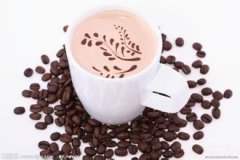
Yegashefi is a small town, 700- 21,000 meters above sea level, synonymous with Ethiopian fine coffee. It is a wetland since ancient times, and the old saying Yirga means to settle down, and Cheffe means wetland. The way coffee is produced and the flavor is so prominent here that Ethiopian coffee farmers compete to be proud of their coffee with Yegashfi flavor, which has become Africa's best.
2015-04-14 Ethiopia Yega sherry boutique coffee beans common sense small town -
Common sense of coffee beans world-famous individual coffee beans and their origin

Latin American coffee beans (Central and South America) Brazil: Santos, Bahia, Cerrado, Mogiana Mexico: Coatepec, Huatusco, Orizaba, Maragogype, Tapanchula, Huixtla, Plumako
2015-04-14 Coffee beans common sense world list and its origin Latin America individual products coffee beans -
Producing area: Cedama Sidama Nekisse coffee beans

Nekisse is the third 90 + bean found by Ninety Plus after Aricha and Beloya in 2010. And got the highest score of 96 on Coffee Review for that year (the following materials are mostly taken from the website of Ninety Plus). Nekisse's raw bean smell is so special that when you open the bag, you will be shocked by its strong wine smell. As for the taste, maybe you need a
2015-04-14 Production area Cedar Sidama Nekisse Coffee beans Nekis -
The basic knowledge of Coffee beans Coffee beans are the three native species of coffee
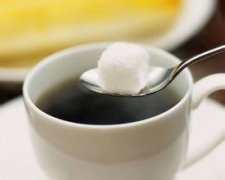
Coffee belongs to the evergreen shrub of the genus Rubiaceae, which is centered in the tropics. There are about 6000 species of Rubiaceae belonging to 500 genera. Coffee has always been thought to have certain effects, such as strengthening the stomach, waking up the brain, stopping bleeding, dissipating heat, strengthening the body, and so on. The more famous Rubiaceae plant is Gardenia jasminoides, whose fruit was dried and used as medicinal material a long time ago. The three native species of coffee
2015-04-13 Coffee beans basic knowledge coffee three native belong to grass family evergreen -
Coffee bean mocha coffee introduction characteristics, origin and history

A brief introduction to mocha Coffee mocha coffee is produced in Ethiopia. Beans are small and fragrant, with strong sour and mellow taste, moderate sweetness and special flavor. Washed coffee beans are well-known high-quality coffee, often drunk on a single basis. However, if mixed coffee can be blended, it is an ideal comprehensive coffee with ideal flavor. The characteristics of mocha coffee Ethiopia is known as the birthplace of coffee and has a coffee origin.
2015-04-13 Coffee beans mocha coffee introduction characteristics origin history -
Nekisse Coffee Bean producing area: Cedama Sidama
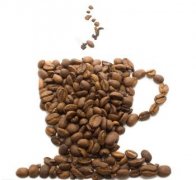
Nekisse is the third 90 + bean found by Ninety Plus after Aricha and Beloya in 2010. And got the highest score of 96 on Coffee Review for that year (the following materials are mostly taken from the website of Ninety Plus). Nekisse's raw bean smell is so special that when you open the bag, you will be shocked by its strong wine smell. As for the taste, maybe you need a
2015-04-11 Nekisse coffee beans producing areas Cedar Sidama Nekis -
The difference between arabica and Robusta Coffee and Coffee beans

The difference between arabica and Robusta Coffee and Coffee beans [figure]
2015-04-11 Rabbi arabica Robbs Booth Robusta Coffee
